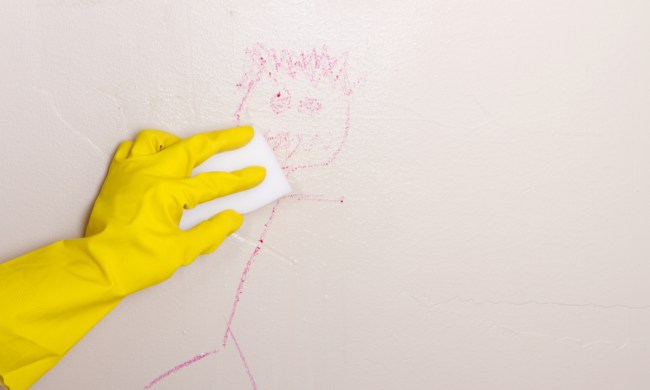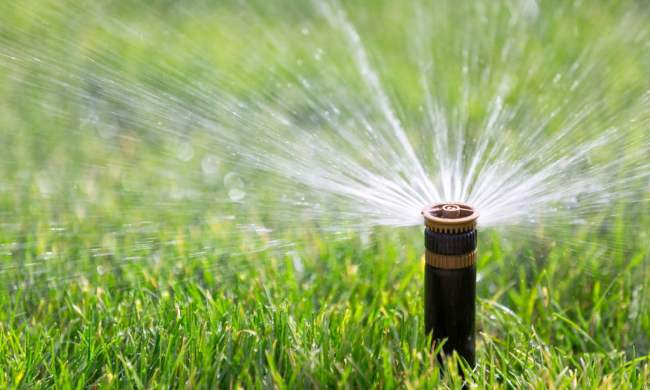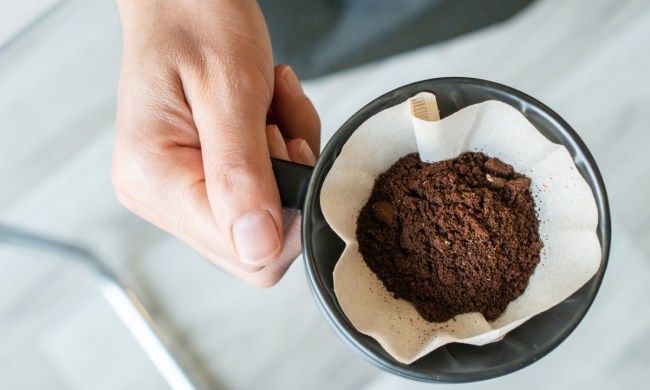Everyone who knows their way around the kitchen has a few must-have tools that they can’t cook without. Yours may be a good chef knife, a specific type of kitchen towel, a specific type of sea salt, etc. Most people don’t have a tape measure on their list of kitchen items, but we’re here to attempt to change that. A kitchen tape measure can help you in so many ways that you would never even think of — until you start keeping one in your kitchen. Once you get on the kitchen measuring tape bandwagon, we’re sure there won’t be any turning back.
What kind of kitchen tape measure should you buy?
Almost any type of ruler or tape measure will suffice, but a metal straight-edged ruler is your best bet in the home kitchen. Metal is easy to clean, lies flat, and won’t warp or melt in hot water or sauce. When shopping for your new kitchen tool, be sure there isn’t a non-stick backing or coating on it, it is easy to read, and that the measurement begins at the end of the ruler. The most likely place to buy such a measuring device? Your local hardware store.
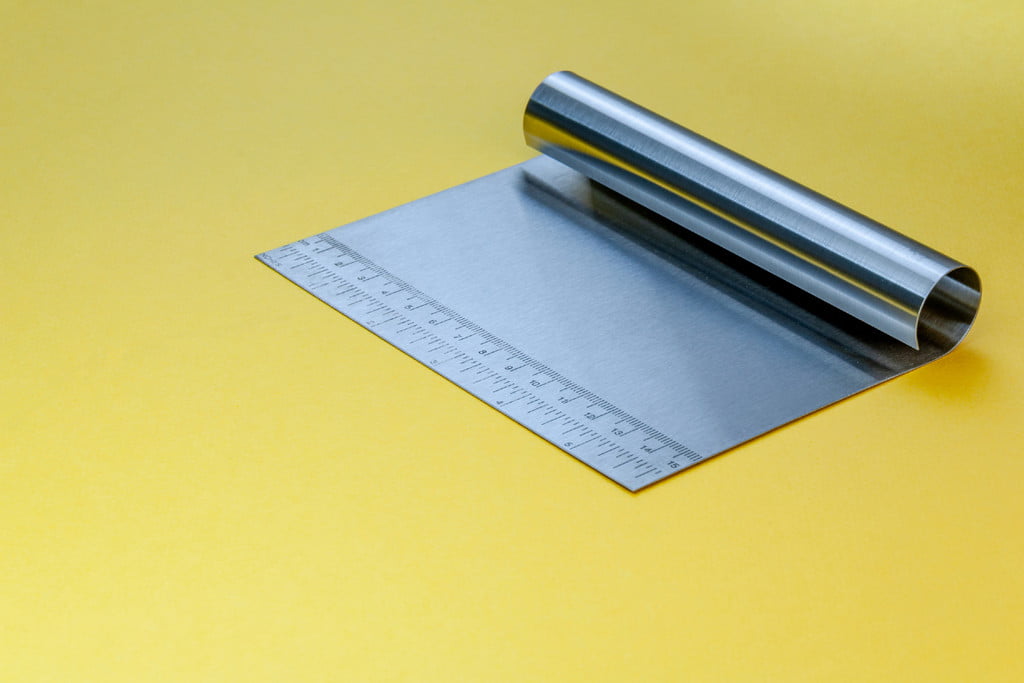
Try to avoid using a retractable tape measure or anything that you cannot wash or sanitize properly. A cloth measuring tape will absorb liquids, and the retractable kind will retreat into its plastic case and trap leftover food bits in there. Of course, you can use any type of tape measure you have on hand in a pinch, but if you’re going to buy a measuring stick specifically for the kitchen, look for the qualities we’ve outlined above.
Ways to use your new kitchen ruler
Using a ruler in the kitchen is a great way to train yourself so you can eventually eyeball that stock or pick out a 9-inch pie pan blindfolded. Measuring is also handy if you’re making an expensive sauce, like a balsamic reduction, so you don’t burn the sauce by reducing it too much and ultimately waste a costly ingredient. You can also use your new ruler when the box of rice instructs you to “cover the rice with a half-inch of water.”
Reduced sauces
Have you ever read a recipe that instructs you to reduce a sauce by half? If you’re like most people, you probably just guessed or eyeballed the sauce and took it off the heat when it looked about right. Use your new metal kitchen ruler when you put the sauce on the heat and then again when you think it’s finished to see if it has, in fact, been reduced by half.
Measure pans
One of the most obvious uses for your new ruler is to measure kitchen pans. And while this may not seem necessary, who really knows if your great-grandma’s cake pan is really 10 inches? Pan sizes vary by manufacturer, and factors such as age and climate can change the shape or size over the years. So, why not be sure of the size of the pan you’re using so your next quiche comes out perfect instead of dry or underdone? When measuring a pot or pan, measure across the bottom rather than across the top to obtain the most accurate measurement.
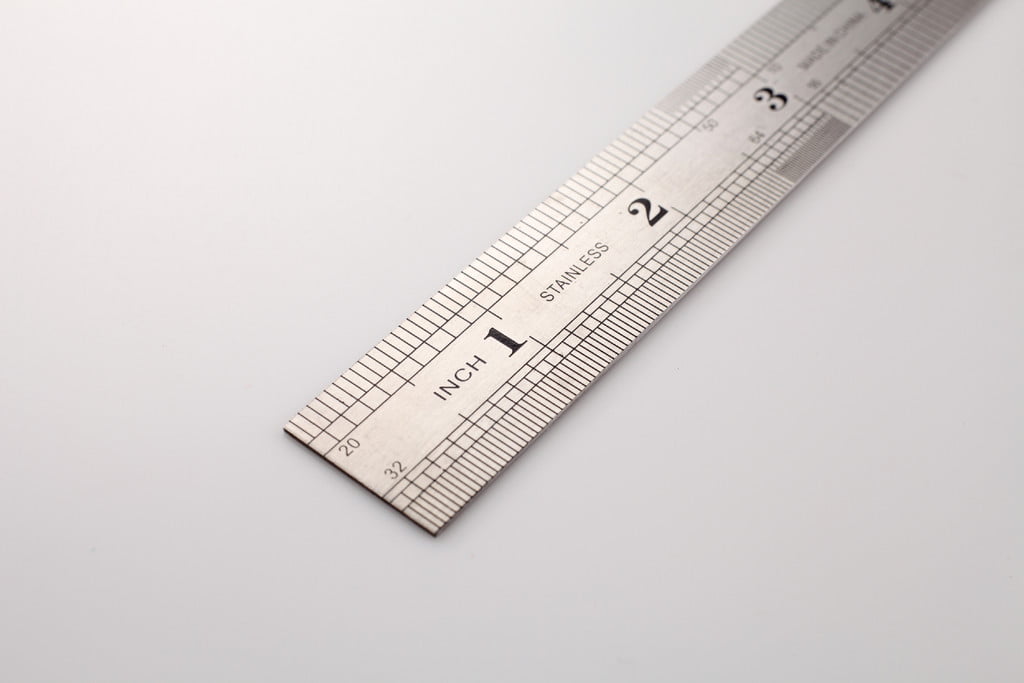
Measure servings
Have you ever tried to cut a piece of pie into 12 slices of the same size and width? This is not an easy task without a fancy pie cutter, but fancy pie cutters are expensive and only do one thing — cut pies. Your new metal kitchen ruler will help you cut any brownies, homemade granola bars, or pies into equal slices or squares. If you’re trying to measure something sticky like rice cereal treats or caramels, spray your ruler with a bit of non-stick cooking spray so it doesn’t stick.
Measure dough diameter and thickness
Measuring the thickness of your pizza or biscuit dough can make or break your finished product. The metal edge of the ruler can also help you divide dough and act sort of like a bench scraper. Many bakers use a ruler when leveling and splitting layer cakes to ensure a uniform finished product. If you are cutting dough, the ruler’s straight edge can help you keep your lines straight so you end up with even portions.
Whether you’re a beginner home chef who wants to train your eye or a seasoned baker looking to elevate their skills, bringing a tape measure into the kitchen is a great trick. A metal ruler can help you with portions, sauces, stocks, doughs, cakes, and so much more. Once you bring your new ruler into the kitchen, you’ll soon wonder how you ever survived before without it.

